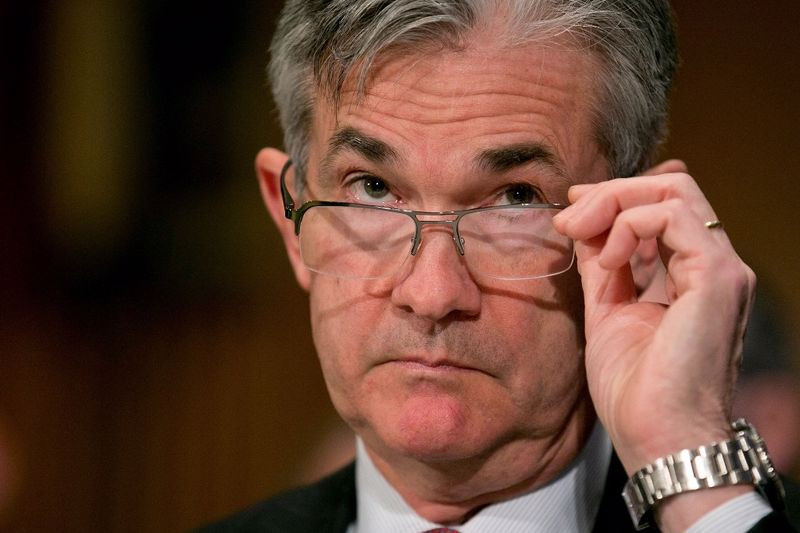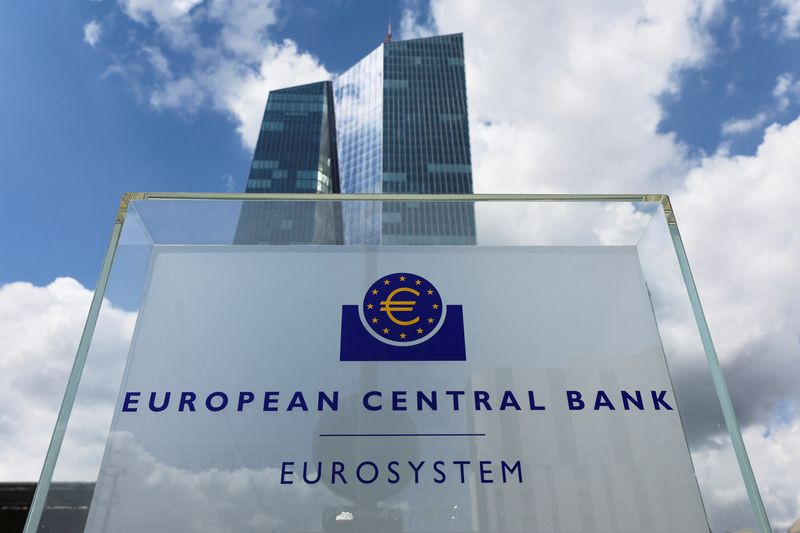
The euro strengthened against its US counterpart by about 0.3% on Monday.
Nevertheless, the single currency closed below the level of parity with the dollar, near $0.9995.
In the absence of important economic releases on both sides of the Atlantic, traders continued to evaluate the signals received earlier from the Federal Reserve and the European Central Bank.
One of the key events of last week was the annual symposium of central bankers in Jackson Hole, and all attention was focused on Friday's speech by Fed Chairman Jerome Powell.
Many investors were hoping to get hints from the head of the Fed about how high the cost of borrowing in the United States could be and how long it would remain at this level.
At the same time, of course, no one expected any startling revelations from Powell.
Although Powell's speech did not cause fireworks in the market, it provoked a flight from risks and knocked the EUR/USD pair off its weekly peak around 1.0070.
Powell's comments also helped the protective dollar to bounce back from the lowest levels since August 19 in the area of 107.60 points.
Meanwhile, the S&P 500 showed the sharpest decline since June, dropping by 3.37% to 4,057.66 points.
After the Jackson Hole conference shed light on the future plans of the US monetary authorities, the S&P 500 lost $1.2 trillion in capitalization.
So did Powell scare the market?
"In fact, the head of the Fed in Jackson Hole rejected the idea that the pressure of the recession would prevent the central bank from actually abandoning its policy. They intend to take a much more aggressive position if the inflation figures continue to grow," Ark Capital Management analysts said.

Morgan Stanley analysts believe that the stock market fell after Powell's comments, because he has been a victim of his own impulse over the past few months.
The S&P 500 index rose almost 11% from mid-June to close on Friday.
"The rally has occurred in almost every bear market over the past 95 years, with growth averaging 18% before the resumption of the downward movement. Given the historical context, we may not have gotten out of difficulties yet," Morgan Stanley strategists said.
They warn that corporate earnings will pose a greater risk to stocks before the end of the year.
"Leading economic indicators point to a slowdown in growth, which may cast doubt on profit estimates," the experts noted.
"While stock investors continue to hope that the Fed will soon wind down its rate hike program, the foreign exchange market seems to believe that the central bank will raise rates for a long time. At least the US dollar is still close to the 20-year high it recently reached," they added.
"The weakness of the stock market is not a sufficient reason to knock the Fed off the path of tightening policy. This situation should support the USD exchange rate," ING analysts believe.
"Excessive positioning is probably the biggest problem for further dollar growth.
Otherwise, it is difficult to fight the strengthening of the greenback," they said.The Fed's hawkish attitude towards inflation continues to favor the dollar, economists at MUFG Bank say.
"Powell stressed that restoring price stability will require restrictive policies for some time. Another important message is that the central bank should continue its work until it is completed. The need to maintain a tougher policy for some time further refutes market expectations regarding the dovish turn of the central bank in the coming year," they noted.

On Friday, at a symposium in Jackson Hole, Powell said that the central bank's main goal is still the return of inflation to the level of 2%, for which the Fed will use strict monetary methods.
"We are purposefully moving our policy to a state where it will seriously restrict economic activity," said Powell.
"Raising rates, slowing economic growth and a weakening labor market will curb inflation, but also cause some pain to households and businesses. This is the sad price of reducing inflation. However, failure to restore price stability will mean even more serious pain," he added.
The dollar went uphill at the end of last week after the head of the Fed pledged to raise interest rates in order to curb inflation, even at the cost of an economic downturn.
At the same time, the decline in demand for risk put pressure on the euro, which ended the past five days near the lowest levels in almost two decades.
The greenback started the new week by updating the September 2002 highs around 109.50, which caused the EUR/USD pair to draw down to 0.9915.
However, then the US currency fell into the range of 108.60-108.80, faced with profit-taking on long positions. This led to the fact that the initiative in EUR/USD passed to bulls who managed to return the pair to positive territory.
The news that the ruling party of the Social Democrats of Germany (SPD) will propose additional measures to help weaken the impact of rising energy prices on citizens challenged the bears on EUR/USD.
A breath of fresh air for the single currency was also the decline in natural gas prices in the eurozone after the European Commission promised emergency intervention and reforms in the electricity market.
"Benchmark European natural gas futures fell about 20% yesterday after Germany said its gas storage facilities were filling up faster than planned, giving the euro some relief," Commonwealth Bank of Australia analysts said.
"Nevertheless, electricity prices in Europe remain sky-high and put a lot of pressure on the finances of households and businesses. European Commission President Ursula von der Leyen said that the EU seeks to intervene to break the link between gas and electricity prices, but did not go into details of the upcoming reform," they added.
The single currency has also benefited from recent statements by ECB representatives, who hinted that the Fed is not the only hawk in town.

"Some ECB officials also used the Jackson Hole symposium to convince the market of their efforts to fight inflation. In particular, Isabelle Schnabel, a member of the ECB's Governing Council, pointed out, like Powell, that they have little choice but to stick to the path of normalization in order to control inflation, even if the eurozone slides into recession," Commerzbank analysts noted.
As in mid-July, the EUR/USD drawdown below the parity level was followed by a revival of verbal interventions by the ECB.
Representatives of the central bank made it clear that they negatively view the weakening of the euro, as this is a pro-inflationary factor.
The EUR/USD pair has found support around 0.9900, but remains vulnerable, ING economists say.
"Money markets are now putting in quotes an ECB rate increase by 63 bps on September 8. We expect only +50 bps. The market also puts in prices a tightening of the ECB policy by 160 bps by the end of the year, which, in our opinion, is also excessive," they said.
"Yesterday, natural gas prices sharply adjusted in Europe. But whether Russia will resume gas supply through Nord Stream -1 after three days of maintenance will be the main factor determining gas prices, as well as the dynamics of the euro, which may remain in the range of $0.9900-1.0100 this week," ING believes.
The hawkish comments of ECB officials helped the single currency to rebound on Monday, but it closed just below the parity level, failing to develop success in a risk-averse environment.
"The ECB seems to be following in the footsteps of the Fed. Since both central banks have once again committed themselves to creating price stability, risky assets have declined quite a lot since last week. This is in stark contrast to the rally we have seen since June. In such an environment, the dollar should remain strong," Danske Bank economists said.
US stock indexes closed lower on Monday, adding to sharp losses last week. In particular, the value of the S&P 500 for the day fell by 0.67% to 4,030.61 points.
Rising inflation on both sides of the Atlantic is prompting leading central banks to raise rates, which, in turn, increases fears of a possible recession.

The negative sentiment caused by the statements of the representatives of the ECB and the Fed weakened on Tuesday, but did not disappear.
Key Wall Street indexes were trading in the red zone on Tuesday, losing about 1% on average.
Touching the local high around 1.0050, the EUR/USD pair slightly adjusted.
Apparently, it is not easy for the pair to extend the rise, since the dollar remains stable, taking advantage of the status of a safe haven asset.
The USD index has moved into a consolidation channel, the lower limit of which is at a recent low near 107.60.
On the other hand, the breakdown of the 2022 high at 109.50 will allow dollar bulls to target the September 2002 peak at 109.75 on the way to the round level of 110.00.
In addition, investors still doubt that the ECB will be able to raise rates at the same rapid pace as its American counterpart.
According to the CME Group, the key rate in the US may reach 4% by the end of the year, while in the eurozone it is unlikely to exceed 2%.
According to Commerzbank economists, investors will remain cautious amid the current difficult conditions for the single currency.
"For the euro, it practically does not matter whether the ECB will raise its key rate by 25, 50 or 75 bps in September. Instead, what matters is how confident the foreign exchange market is that the ECB will be able to significantly tighten monetary policy, despite any difficulties. Given the upcoming winter and the threat of an energy crisis, investors in the euro are likely to remain understandably cautious," they noted.
The initial resistance for the EUR/USD pair is the 1.0080 mark (the 38.2% Fibonacci retracement level of the last downward move). Next, 1.0100 (100-day moving average) and 1.0130 (50% Fibonacci retracement level) can come into play.
Meanwhile, the 1.0020 mark (the 23.6% Fibonacci retracement level) forms a key support. A breakthrough below this level will signal that the pair may extend the fall to parity and further to 0.9980 (50-day moving average).





















